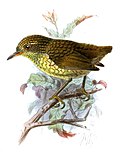
The brown nunlet is a species of near-passerine bird in the family Bucconidae, the puffbirds, nunlets, and nunbirds. It is found in Colombia, Ecuador, and Peru.

The Roraiman nightjar is a species of nightjar in the family Caprimulgidae. It is found in Brazil, Guyana, and Venezuela.

The agile tit-tyrant is a species of bird in subfamily Elaeniinae of family Tyrannidae, the tyrant flycatchers. It is found in Colombia, Ecuador, and Venezuela.

The yellow-billed tit-tyrant is a species of bird in subfamily Elaeniinae of family Tyrannidae, the tyrant flycatchers. It is found in Argentina, Bolivia, Chile, Peru, and as a vagrant in Uruguay.
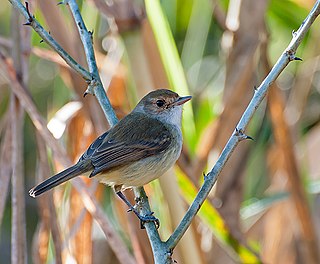
The fulvous-crowned scrub tyrant, or tawny-crowned pygmy-tyrant, is a species of bird in the family Tyrannidae, the tyrant flycatchers. It is found in Argentina, Bolivia, Brazil, Colombia, Paraguay, Peru, Uruguay, and Venezuela.

The rufous-sided scrub tyrant, or rufous-sided pygmy-tyrant, is a species of bird in the family Tyrannidae. It is found in Bolivia, Brazil, Paraguay, and Suriname.

The plain inezia, or plain tyrannulet, is a species of passerine bird in the family Tyrannidae, the tyrant flycatchers. It is found in Argentina, Bolivia, Brazil, Paraguay, and Peru.

The orange-banded flycatcher is a species of bird in the family Tyrannidae, the tyrant flycatchers. It is found in Ecuador and Peru.

The ochraceous-breasted flycatcher is a species of bird in the family Tyrannidae, the tyrant flycatchers. It is found in Bolivia and Peru.

The handsome flycatcher is a species of bird in the family Tyrannidae, the tyrant flycatchers. It is found in Colombia, Ecuador, Peru, and possibly Bolivia.
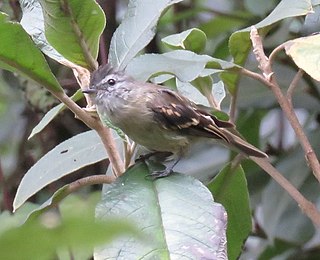
The tawny-rumped tyrannulet is a species of bird in subfamily Elaeniinae of family Tyrannidae, the tyrant flycatchers. It is found in Bolivia, Colombia, Ecuador, Peru, Venezuela, and possibly Argentina.

Chapman's bristle tyrant, also known as Chapman's tyrannulet, is a species of passerine bird in the family Tyrannidae, the tyrant flycatchers. It is found in Brazil, Guyana, and Venezuela.

The Panama tyrannulet or yellow-green tyrannulet is a species of bird in the family Tyrannidae, the tyrant flycatchers. It is endemic to Panama.

The olive-green tyrannulet is a species of bird in the family Tyrannidae, the tyrant flycatchers. It is found in Brazil, French Guiana, Guyana, and Suriname.
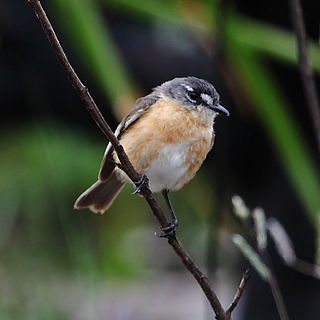
The grey-backed tachuri is a species of bird in subfamily Elaeniinae of family Tyrannidae, the tyrant flycatchers. It is endemic to Brazil.

The Amazonian scrub flycatcher or Todd's scrub flycatcher is a species of bird in the family Tyrannidae, the tyrant flycatchers. It is found in every mainland South American country except Argentina, Chile, Paraguay, and Uruguay.

The chapada flycatcher is a Near Threatened species of bird in subfamily Fluvicolinae of family Tyrannidae, the tyrant flycatchers. It is found in Bolivia and Brazil.

The Orinoco piculet is a species of bird in subfamily Picumninae of the woodpecker family Picidae. It is found in Brazil, Colombia, and possibly Venezuela.
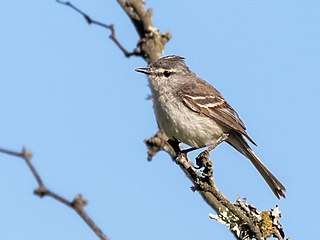
Straneck's tyrannulet, also known as the monte tyrannulet and grey-crowned tyrannulet, is a small species of bird in the family Tyrannidae, the tyrant flycatchers. It is found in Argentina, Bolivia, Brazil, Paraguay, and Uruguay.

The tepui elaenia is a species of bird in subfamily Elaeniinae of family Tyrannidae, the tyrant flycatchers. It is found in Brazil, Guyana, and Venezuela.
























